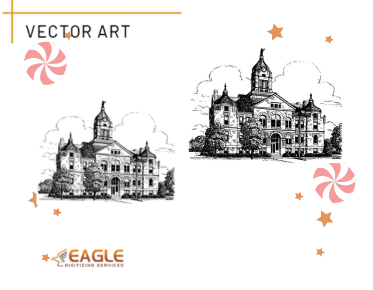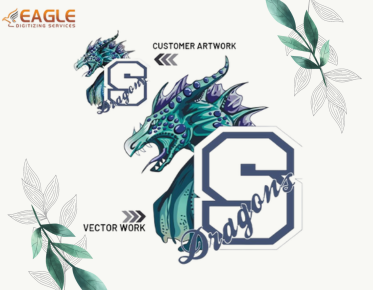Convert Any Image to Vector - 6 Ways to Vectorize an Image
Vectorizing an image is one of the most crucial steps in digital design today. It involves converting raster images, which can lose clarity when resized, into crisp, scalable vector graphics. This process is indispensable for businesses needing high-quality logos, promotional materials, and detailed designs. In this comprehensive guide, we will explore six effective techniques to vectorize an image, helping you turn any artwork into a scalable masterpiece.
Understanding Raster vs. Vector
Before diving into the methods, it’s vital to understand why vector conversion services are necessary. Raster images are made from pixels, which become blurry when enlarged. In contrast, vector graphics use mathematical equations to retain clarity and sharpness at any size, making them ideal for large-format printing and intricate designs.
Method 1: Manual Tracing
Manual tracing involves using software like Adobe Illustrator to meticulously trace over a raster image, converting paths and shapes into vectors. This method offers maximum control and precision, allowing designers to create detailed vector graphics, suitable for vector art services online. Although time-consuming, the quality it produces justifies the effort.
Method 2: Automatic Tracing Software
If time is of the essence, automatic tracing tools can efficiently vectorize images. Software such as Vector Magic automates this process, making it simpler and quicker. These tools are ideal for simpler designs where manual precision isn't as critical.
Method 3: Using Vectorization Services
For businesses that require professional-grade vector images without investing in expensive software or training, turning to specialized vectorizing services is an excellent option. Companies like Eagle Digitizing offer comprehensive vectorization services, including intricate logo designs and color separations for screen printing.
Method 4: Bitmap to Vector Conversion
Bitmap to vector conversion is a preferred choice for converting digital designs into clean vectors. Many online tools and software packages offer bitmap to vector conversion, simplifying the process for users who need to convert images quickly while maintaining quality.
Method 5: Outsourcing to Professionals
When precision is paramount, outsourcing vector conversion to experienced professionals can be the best solution. Experts use advanced techniques to ensure that even the smallest details are accurately captured. This outsourced approach is particularly beneficial when dealing with complex imagery that requires specialized skills.
Method 6: DIY with Online Tools
For quick conversions, numerous online vector conversion tools are available. These platforms allow you to upload a raster image and receive a vector file in return. While convenient, the output quality may vary, so it's best used for simpler designs.
The Role of Eagle Digitizing
As highlighted, Eagle Digitizing is a leader in providing high-quality vectorization services. Their professional team excels in converting various image types into scalable vectors, catering to industries ranging from apparel to marketing agencies. Their commitment to quality and fast turnaround makes them a trusted partner for many businesses.
Looking Forward
As digital design continues to evolve, the demand for vector graphics will only increase. Ensuring that your business has access to reliable vector conversion methods is crucial. Whether you choose professional services like Eagle Digitizing or explore software solutions yourself, staying updated with the latest techniques in vectorization is key. How do you plan to incorporate these vectorization techniques into your workflows?



